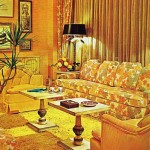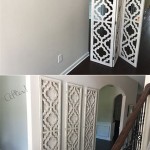Living Room Decor With a Red Sofa: A Comprehensive Guide
A red sofa can be a striking centerpiece in any living room. It's a bold statement piece that commands attention and can instantly elevate the room's aesthetic. However, decorating around a red sofa requires careful consideration of color palettes, textures, and overall design principles to create a cohesive and visually appealing space. This article will explore various strategies for incorporating a red sofa into different living room styles, offering practical advice on how to achieve a balanced and harmonious look.
The intensity of the red hue is a primary factor influencing decorating choices. A bright, cherry red sofa will have a vastly different impact than a deep, burgundy sofa. The chosen shade dictates the supporting colors and materials that will best complement the piece. Consideration should also be given to the existing architectural features of the room, such as wall color, flooring, and natural light, as these elements will contribute to the overall ambiance.
Texture plays a crucial role in softening the boldness of a red sofa. Incorporating different textures through cushions, throws, rugs, and wall decor can create visual interest and prevent the space from feeling flat or overwhelming. Contrasting textures, such as pairing a velvet red sofa with linen cushions or a shaggy rug, can add depth and sophistication.
Considering Complementary Color Palettes
The foundation of any successful living room design is a well-chosen color palette. When dealing with a red sofa, it's essential to select colors that either complement or contrast the red in a harmonious way. Several color schemes work effectively with a red sofa, each offering a distinct aesthetic.
One popular option is to embrace a monochromatic scheme. This involves using different shades and tints of red throughout the room. For example, pairing the red sofa with lighter red cushions, perhaps in coral or rose tones, and incorporating deeper reds in the artwork or accessories can create a sophisticated and unified look. Utilizing different textures within the same color family is crucial to prevent the space from appearing monotonous.
Another approach is to opt for a complementary color scheme. Green is the complementary color of red, meaning they sit opposite each other on the color wheel. Pairing a red sofa with various shades of green, from olive to emerald, can create a visually striking and balanced space. This combination offers a sense of vibrancy and can evoke feelings of nature and freshness. Introducing natural elements, such as plants, can further enhance this effect.
Neutral color palettes are also highly effective with red sofas. Gray, beige, and white provide a calming backdrop that allows the red sofa to truly stand out. This approach is particularly useful for those who prefer a more minimalist or contemporary aesthetic. The key to success with neutral palettes is to choose the right undertone. A cool gray, for instance, might clash with a warm red. Opting for warmer grays or creamy beiges can create a more cohesive and inviting atmosphere.
For a bolder statement, consider a triadic color scheme. This involves selecting three colors that are equally spaced apart on the color wheel. For example, pairing a red sofa with yellow and blue accents can create a vibrant and eclectic space. This approach requires careful balancing to prevent the room from feeling chaotic. Using one color as the dominant shade and incorporating the other two as accent colors is often the most effective strategy.
Analogous color schemes, which involve using colors that are next to each other on the color wheel, can also work well. Pairing a red sofa with orange and pink accents can create a warm and inviting atmosphere. This approach is particularly suitable for creating a cozy and feminine aesthetic.
Incorporating Texture and Pattern
Texture and pattern are essential elements in any interior design, but they are particularly important when working with a bold piece like a red sofa. These elements can add depth, visual interest, and a sense of personality to the space. By carefully selecting textures and patterns, one can soften the boldness of the red sofa and create a more balanced and harmonious look.
Texture can be incorporated through a variety of elements, including cushions, throws, rugs, and wall decor. Pairing a smooth, velvet red sofa with rougher textures, such as linen cushions or a jute rug, can create a pleasing contrast. Similarly, incorporating knitted throws or faux fur cushions can add warmth and comfort to the space. Layering different textures can create a sense of depth and prevent the room from feeling flat or one-dimensional.
Pattern can be introduced through cushions, curtains, rugs, and artwork. When selecting patterns, it's important to consider the overall style of the room and the existing color palette. Geometric patterns, such as stripes or chevrons, can add a modern and contemporary touch. Floral patterns can create a more traditional and romantic feel. Abstract patterns can add a sense of artistic flair. The scale of the pattern should also be considered. Smaller patterns are generally more subtle, while larger patterns can make a bolder statement. When combining multiple patterns, it's important to vary the scale and style to prevent the room from feeling overwhelming.
Consider the texture of the walls. Smooth, painted walls offer a clean and modern backdrop, while textured walls, such as those with wallpaper or exposed brick, can add depth and character. Wallpaper can be a particularly effective way to introduce pattern and texture to the room. Opting for a subtle pattern in a neutral color can complement the red sofa without overpowering it. Alternatively, choosing a bold pattern with red accents can create a cohesive and dramatic look.
Rugs are another essential element for grounding the space and adding texture. A large rug placed beneath the red sofa can help to define the seating area and create a sense of cohesion. Opting for a rug with a contrasting pattern or texture can add visual interest and prevent the room from feeling monotonous. Consider materials like wool, jute, or sisal for added texture and durability.
Choosing Furniture and Accessories
The selection of furniture and accessories is crucial for completing the living room design and creating a cohesive and stylish space around a red sofa. The style of the furniture should complement the overall aesthetic of the room, whether it be modern, traditional, eclectic, or bohemian. The accessories should add personality and visual interest, while also complementing the color palette and textures of the room.
Consider the style of the coffee table. A glass coffee table can create a light and airy feel, while a wooden coffee table can add warmth and texture. An ottoman can serve as both a coffee table and extra seating, providing versatility and functionality. The size of the coffee table should be proportional to the size of the sofa and the overall dimensions of the room.
Side tables are essential for providing a place to set drinks, lamps, and other accessories. Choose side tables that complement the style of the coffee table and the overall aesthetic of the room. A pair of matching side tables can create a sense of symmetry and balance, while mismatched side tables can add a more eclectic and collected feel.
Lamps are crucial for creating ambiance and providing task lighting. Floor lamps can add height and drama to the room, while table lamps can provide a softer and more intimate light. Choose lamps with shades that complement the color palette of the room. Metal lamps can add a touch of modernity, while ceramic lamps can add a more traditional feel. Consider the placement of the lamps to maximize their effectiveness. Place lamps near seating areas to provide adequate lighting for reading and conversation.
Artwork is a powerful way to add personality and visual interest to the room. Choose artwork that complements the color palette and style of the room. Abstract artwork can add a modern and contemporary touch, while landscape paintings can create a more traditional and serene atmosphere. Consider the size and placement of the artwork. A large piece of artwork can serve as a focal point, while smaller pieces can be grouped together to create a gallery wall.
Cushions and throws are essential for adding comfort and style to the red sofa. Choose cushions and throws in a variety of textures and patterns to create visual interest. Consider using cushions in complementary colors or patterns to add a pop of color. Layering multiple cushions and throws can create a cozy and inviting atmosphere.
Plants can add life and freshness to the room. Choose plants that thrive in the amount of light available in the room. Consider using a variety of plant sizes and textures to create visual interest. Place plants near windows to maximize their exposure to light. Incorporate plants into decorative pots that complement the style of the room.
Mirrors can be used to enhance the feeling of space and light in the room. Place a large mirror on a wall to reflect light and create the illusion of a larger room. Consider using decorative mirrors to add visual interest. Mirrors with ornate frames can add a touch of elegance, while mirrors with minimalist frames can create a more modern look.

12 Fabulous Red Sofas For Your Living Room

4180 Samson Red Sofa And Loveseat Www Furnitureurban Com Living Room Couch

Next Color Discussion Red Couch Living Room Couches Farm House

30 Ways To Incorporate A Red Sofa Into Your Interior Digsdigs

Bold And Beautiful 7 Red Hot Living Room Ideas Furniture Choice

Home Red Living Room Decor Furniture Sofa

20 Top Modern Red Sofa Design Ideas For Living Room Livingroomideas Livingroomdecorations Couch Decor

30 Ways To Incorporate A Red Sofa Into Your Interior Digsdigs

13 Ideas That Will Make You Fall In Love With A Red Sofa Couch Living Room Colors

12 Fabulous Red Sofas For Your Living Room Centrepiece Furnishing Custom Made Sofa







